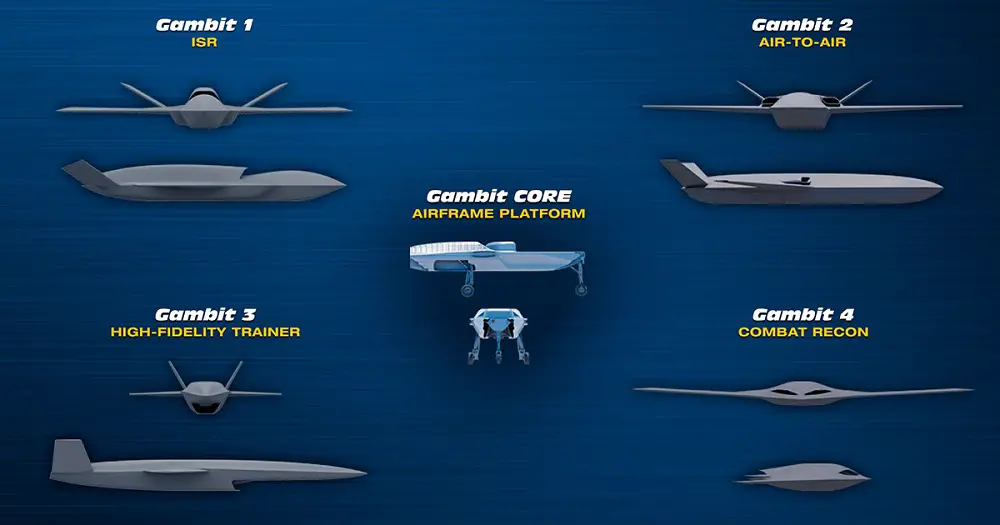Air control is a cornerstone of American and allied military power – but it can’t be taken for granted. An array of high-tech new aircraft and threats mean that the old ways of establishing and keeping air superiority will be increasingly challenged. In order to keep ahead, the U.S. Air Force and its trusted partners must adapt the way they work. That’s why the Air Force is turning to a new breed of collaborative combat aircraft – highly autonomous unmanned aircraft that will vastly expand what’s possible for human pilots aboard fifth-generation and newer fighters. And that’s why the world leader in unmanned aircraft, General Atomics Aeronautical Systems, Inc., has created the world’s first family of unmanned collaborative aircraft: Gambit.

These new unmanned systems will be less expensive than human-piloted fighters. They also put a boundary between hostile aircraft and friendly ones in which no people are at risk. And being able to field them in larger numbers also helps U.S. and allied forces preserve several advantages over adversaries. Low-observable jets are built to delay detection from one aspect – usually to frustrate a ground-based radar attempting to detect them ahead and from below. But when two or three or more autonomous Gambit aircraft work together to image and sense a target from multiple aspects in the air, that helps greatly with detecting and tracking it. Depending on how they’ve been instructed, the unmanned systems might do nothing. They might relay the track they’ve developed to a human-piloted aircraft.

One Gambit is to be configured to carry both air-to-air and / or air-to-ground weapons to support air superiority sweeps and strike packages. Another Gambit aircraft has a low-observable design coupled with mission systems to augment strike packages with enhanced capabilities in the radio frequency spectrum. A third aircraft is dedicated to long-endurance intelligence, surveillance and reconnaissance to build and maintain battle space awareness to support manned and unmanned inbound strike packages. And finally, because air superiority begins with the training and qualification of expert human pilots, one Gambit model is a dedicated aggressor, for use in weapons school and similar environments to sharpen air combat skill.

Counter-air is only one of the many missions required to sustain superiority and only one of the applications for the Gambit series. Each aircraft is roughly 70 percent common, with a universal core similar to the practices within automaking: once a car manufacturer assembles a frame, chassis, wheelset and other components, it can head down one production line to become a family sedan or down another to become a luxury model with a different interior. So too with Gambit, making each model simpler and less costly to produce. What also differentiates the series is the industry-leading software and other support systems that enable the aircraft. GA-ASI is the clear leader in autonomous aircraft systems, with a number of first-of-their kind demonstrations supporting U.S. Air Force or other advanced programs.
















